HubSpot Blog Metrics: A Tour of HubSpot’s Measuring Tools
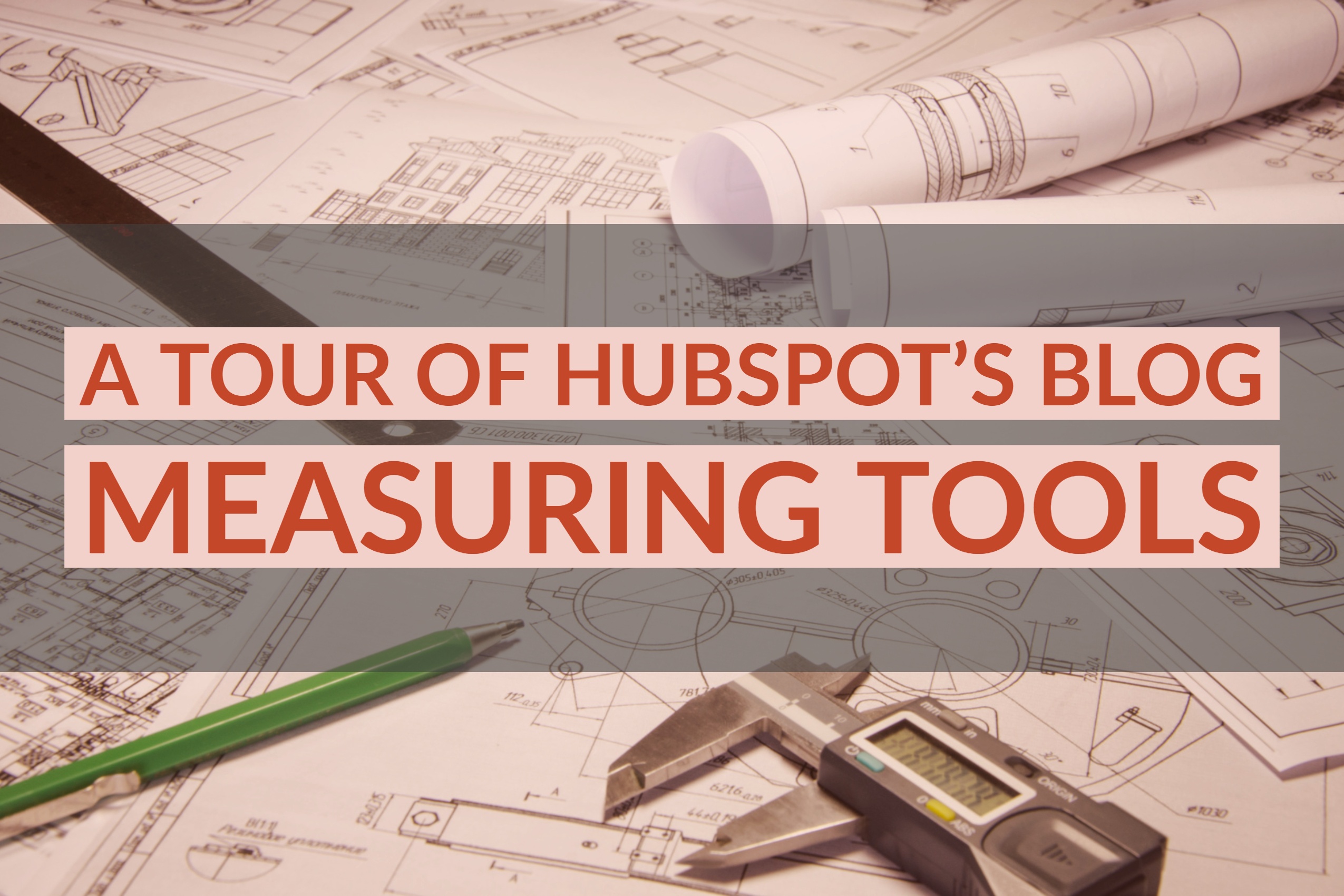
If you’ve been reading the Inbound Accelerator the last few weeks, you’ve heard about how important it is to monitor your business blog’s performance in order to stack up actual results against goals, make decisions to improve future performance, and prove the ROI of your inbound marketing efforts.
If you’ve missed them, check out these posts: Blog Metrics to Measure & Use (Part 1-Traffic) and Blog Metrics to Measure & Use (Part 2-Lead Conversion).
Most of those metrics can be easily tracked if you are using HubSpot, one of the original inbound marketing content management and marketing automation solutions. HubSpot’s initial dashboard and analytics reporting for business blogs can provide the data you need to evaluate your efforts.
Let’s look at the metrics we covered in our previous blog posts, and then show you what those reports look like in HubSpot.
Part One:
Blog traffic totals:
From the Blog Analytics page, you can see your total views by the current month or last month, and compare it to the previous period for a birds-eye view of your overall traffic. Review whether your traffic is steady day-to-day and week-to-week, or if you see significant jumps on specific days.
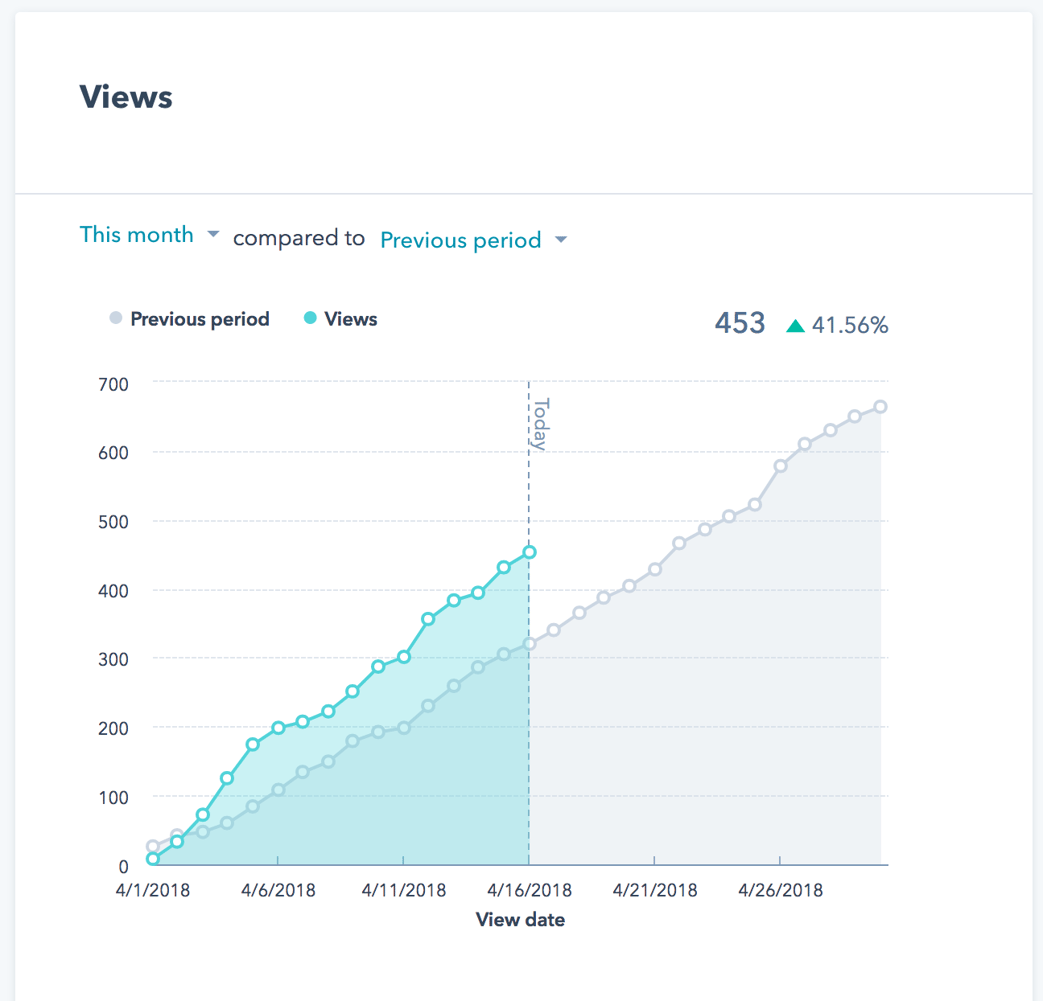
Individual post views:
You can get detailed results for each individual post or compare posts against each other with a variety of reports on the Blog Analytics page in HubSpot’s platform. One thing you will likely discover when you review top views for a given period: Many of your top performing posts may be days, weeks or months old—that is the power of compounding posts (which I discussed here: Business Blogging & Compounding Posts).
Comparison of recently published posts:
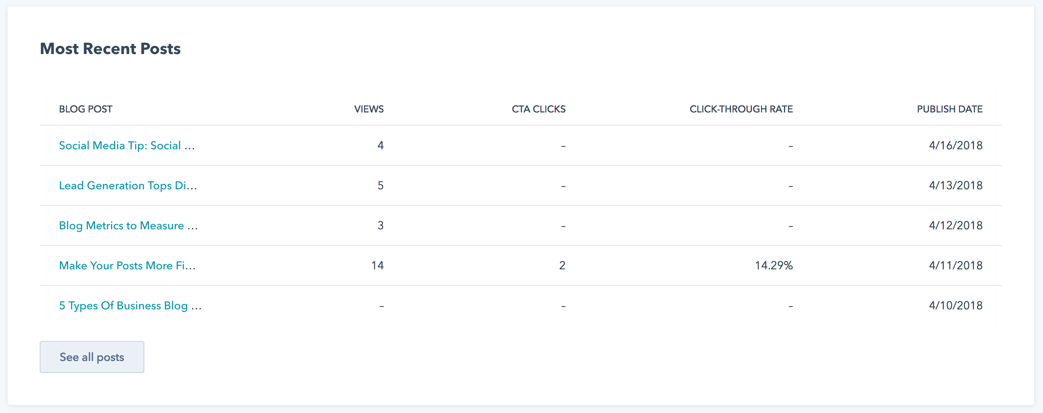
Comparison of most-visited posts for a given period:
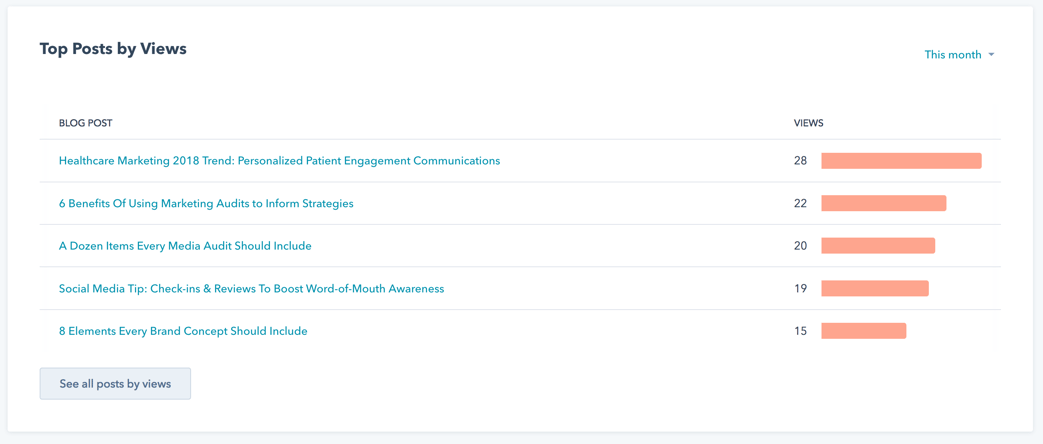
Recap of a single post’s traffic over time:
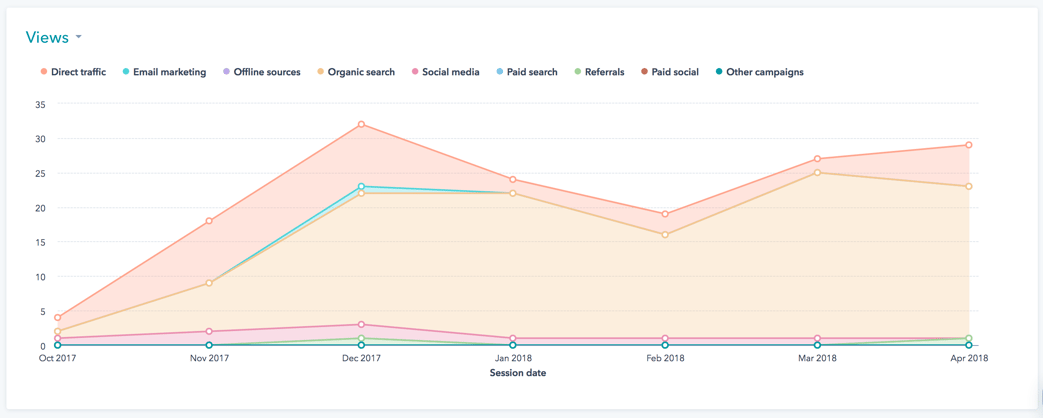
Channels that bring visitors to your blog and website
HubSpot’s Analytics Tools page includes a Sources report that shows what portion of your traffic comes from organic search, direct visits, social media, email and more. Break it down further to see which specific URLs are visited most by direct traffic and what search terms lead to organic traffic.
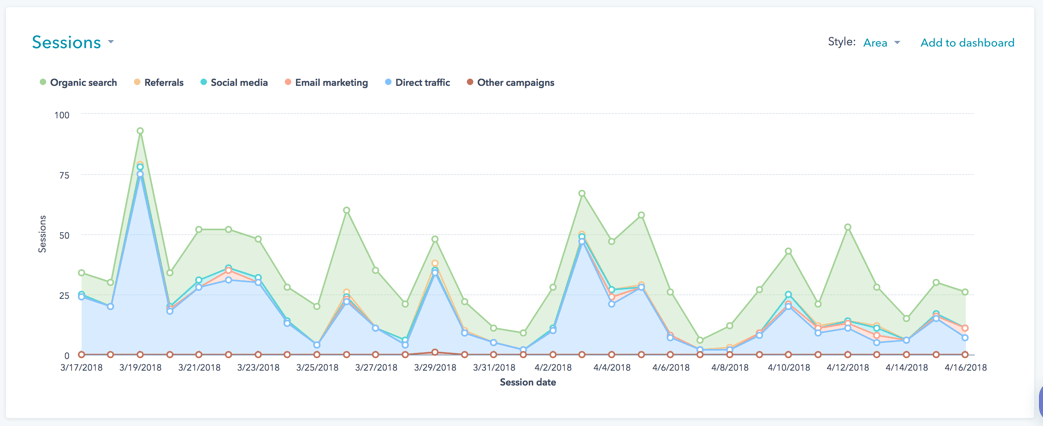
Subscribers
How many readers have subscribed to receive regular updates? This is one of the first Hubspot blog metrics you’ll see on the main dashboard.
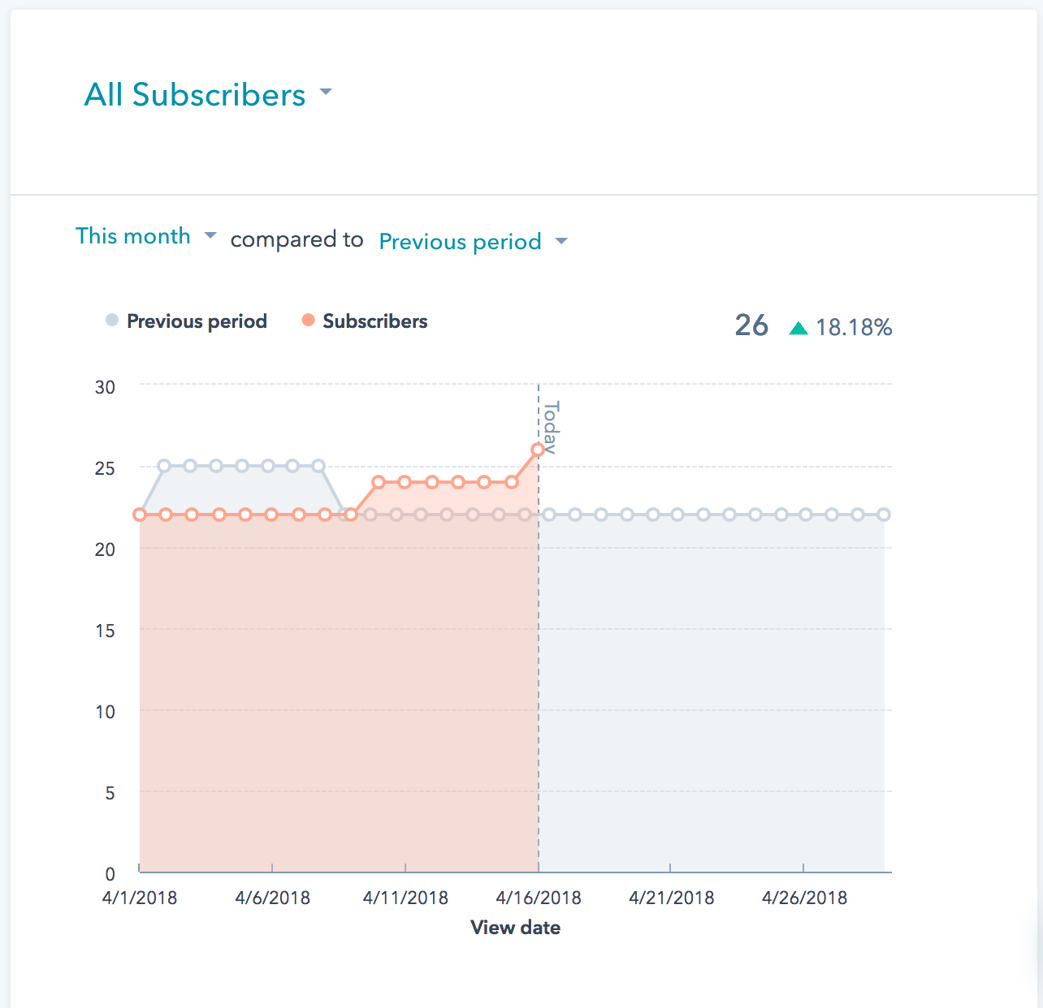
Part Two:
Those first four main metrics are focused on traffic and views. But the real purpose of a business blog is to convert visitors into leads and provide support for converting leads into customers. HubSpot provides data to track those essential numbers as well.
Post performance by clicks (click-through rate on calls-to-action)
HubSpot’s report will tell you which posts have had the most clicks in a set period (by day, week, month, quarter, year or all data). Compare both the raw number of clicks and the percentage of clicks — if a post with low traffic has a high percentage of clicks, it is a sign you need to promote the post more to get more traffic in order to maximize its potential.
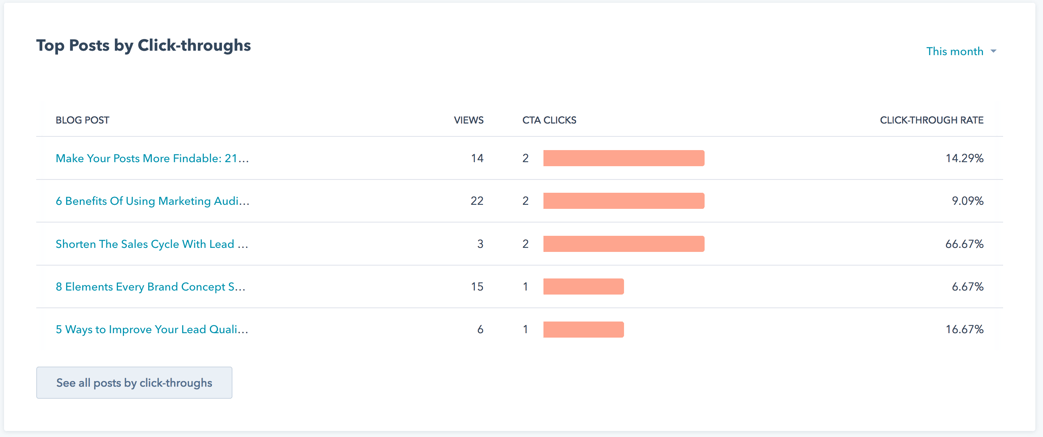
Conversion rate of visitors to leads from blog CTAs
The next step in lead generation with a business blog is for those who click through from CTAs to complete a landing page form to convert into leads. Low conversion rates can be a sign of problems with your CTAs (such as misleading wording) or landing pages (such as overwhelming forms).
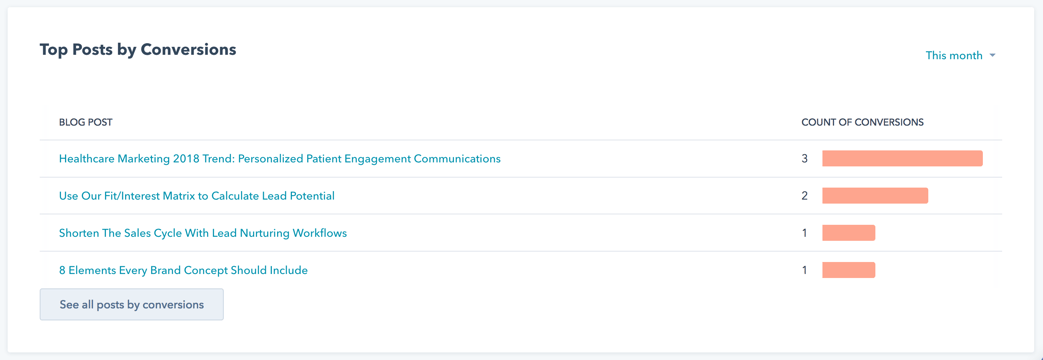
HubSpot’s platform can also take you deeper in many ways, creating reports that will help you make the most out of the measurements they provide through their content management and inbound marketing programs. But the amount of information can also be overwhelming, on top of learning all of the ins and outs of what HubSpot can provide in terms of managing marketing automation as well.
Don’t let those capabilities, and your investment in HubSpot to drive your inbound marketing, go to waste. Consider whether you need to work with a HubSpot-certified agency to make the most of all that inbound marketing can do. (5 Benefits of Working With An Inbound Marketing Agency)
Find out more about how a HubSpot certified partner can help you (and show your boss why you should bring a partner on board) by downloading our ready-to-customize presentation: Why We Need An Agency Partner.
-1.png?width=1652&height=294&name=Jones(RGB)-1.png)











